1917: A Technical Marvel of War
In the heart of World War I, two young British soldiers, Lance Corporals Schofield (George MacKay) and Blake (Dean-Charles Chapman), are tasked with a perilous mission. They must deliver a crucial message to the front lines, ordering the immediate halt of an impending offensive. Communication lines have been severed, and the troops are unaware that the German retreat is a strategic trap. The corporals must navigate treacherous enemy territory against the clock to save the lives of thousands of soldiers, including Blake’s own brother.
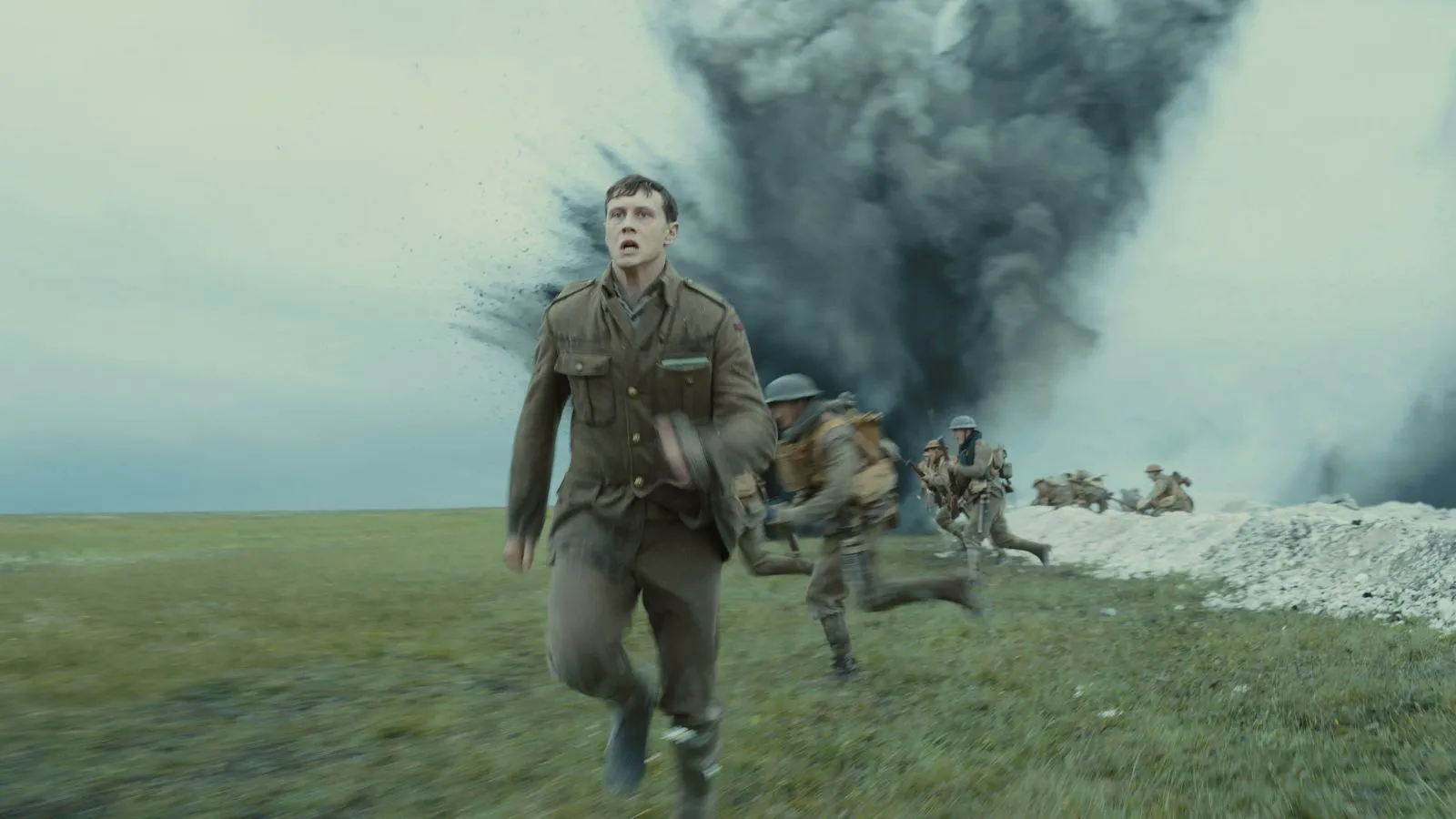
What unfolds over the next two hours is a relentless barrage of running, crawling, and shooting. “1917” is a war spectacle where the form dictates the content. The film is masterfully shot by cinematographer Roger Deakins, creating the illusion of a single, unbroken take—or perhaps two, with a cleverly concealed cut precisely at the film’s midpoint. It’s essentially a chase movie, with time itself as the primary antagonist. Brief respites feel like checkpoints in a video game: a pause for dialogue, a cutscene featuring a downed aircraft, and then back to the race against time.
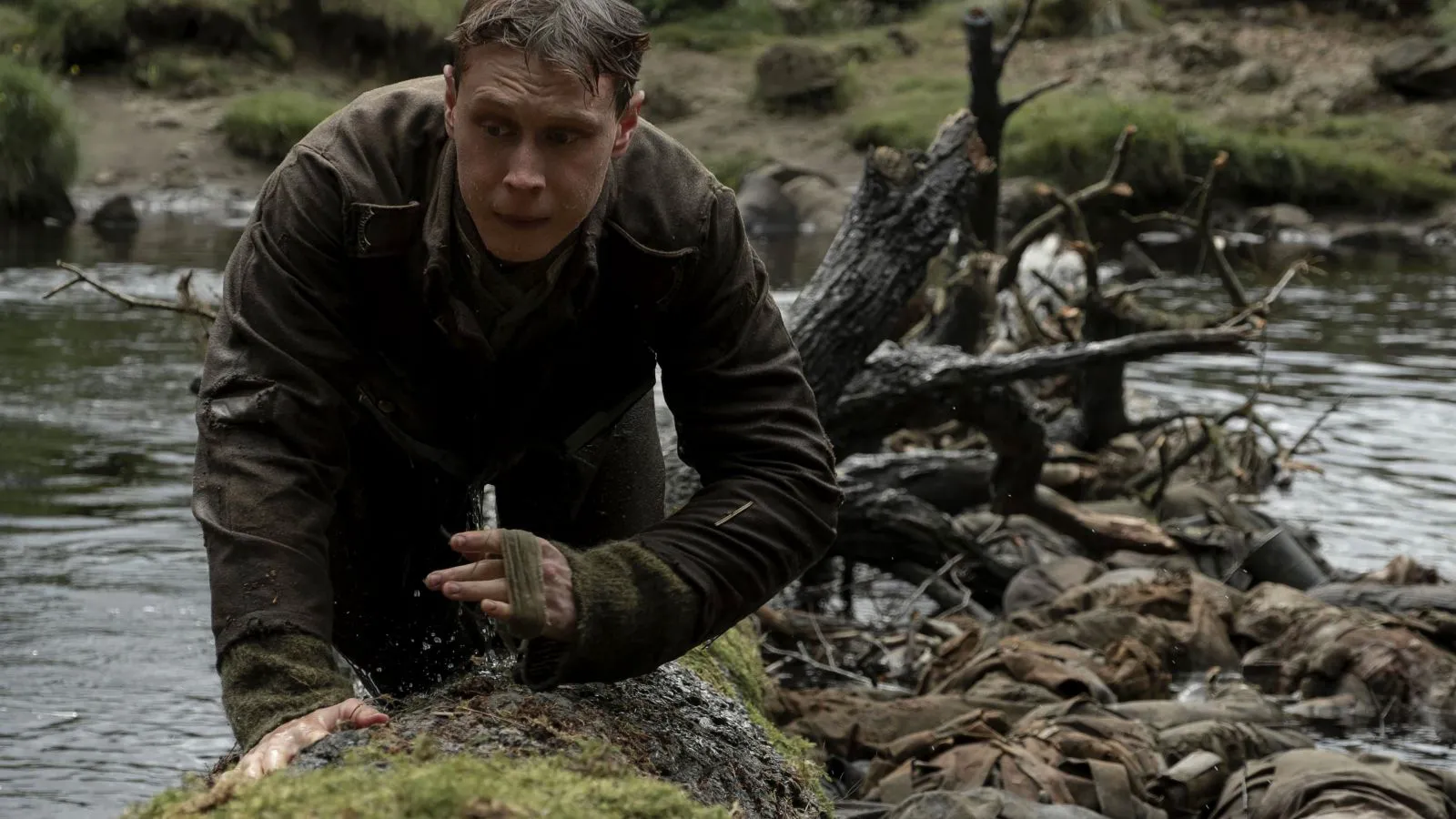
Technical Brilliance vs. Emotional Depth
The film is more engaging on a technical level (“Ah, the characters are moving around the crowd so the camera can overtake them,” or “They’re entering a dark room to hide a cut”) than it is emotionally. However, there are a few exceptional scenes where the film’s pulse resonates deeply with the viewer. “1917” is a meticulously constructed film, and it doesn’t shy away from it. The narrative beats, the placement of action sequences and moments of respite, and the ebb and flow of tension are all carefully orchestrated.
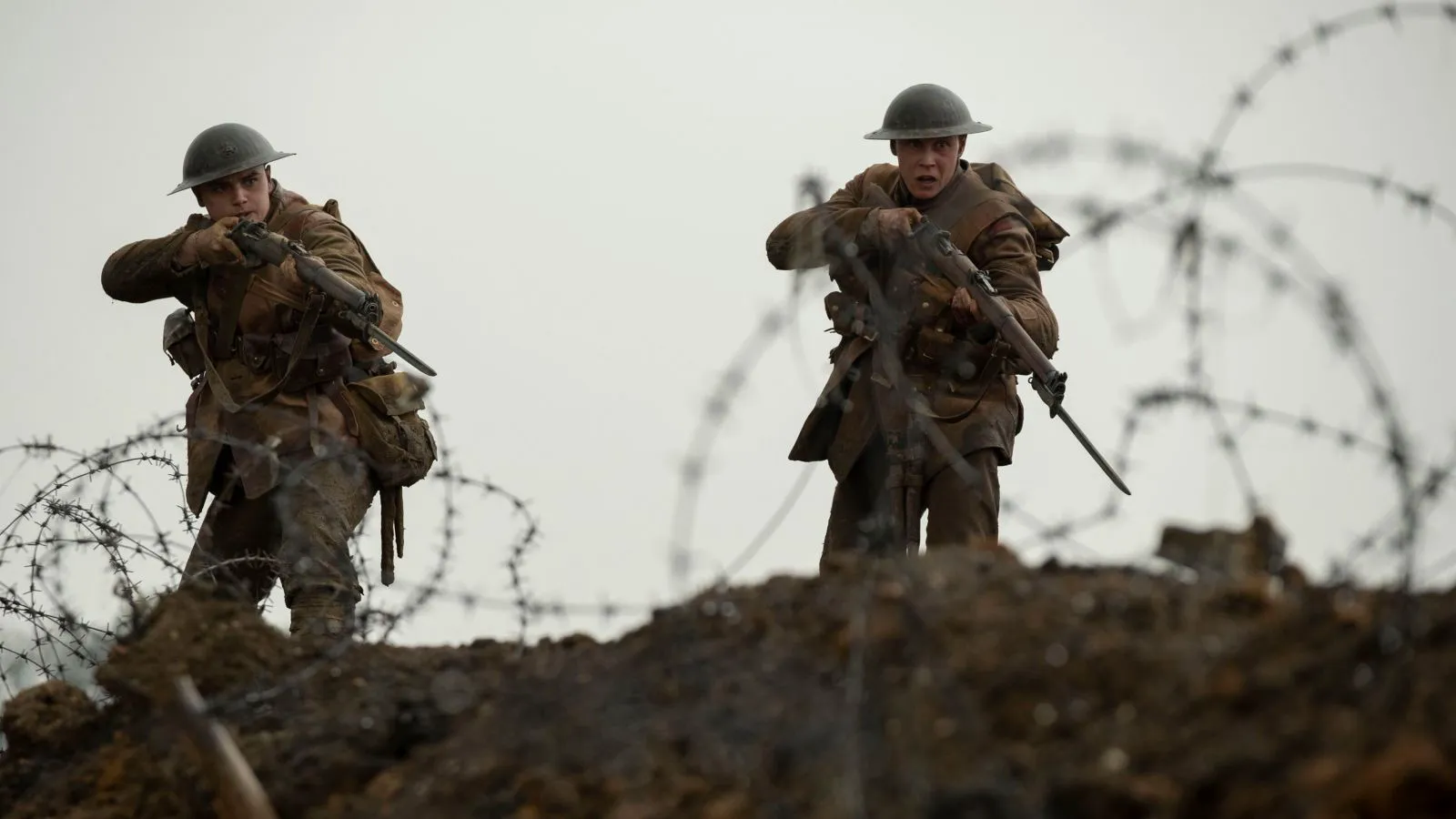
The concept of the “actant”—a character who crosses a threshold, triggering the central conflict—is taken literally. Schofield and Blake physically cross the “line” of the front, as if director Sam Mendes is adhering to screenwriting rules from a textbook.
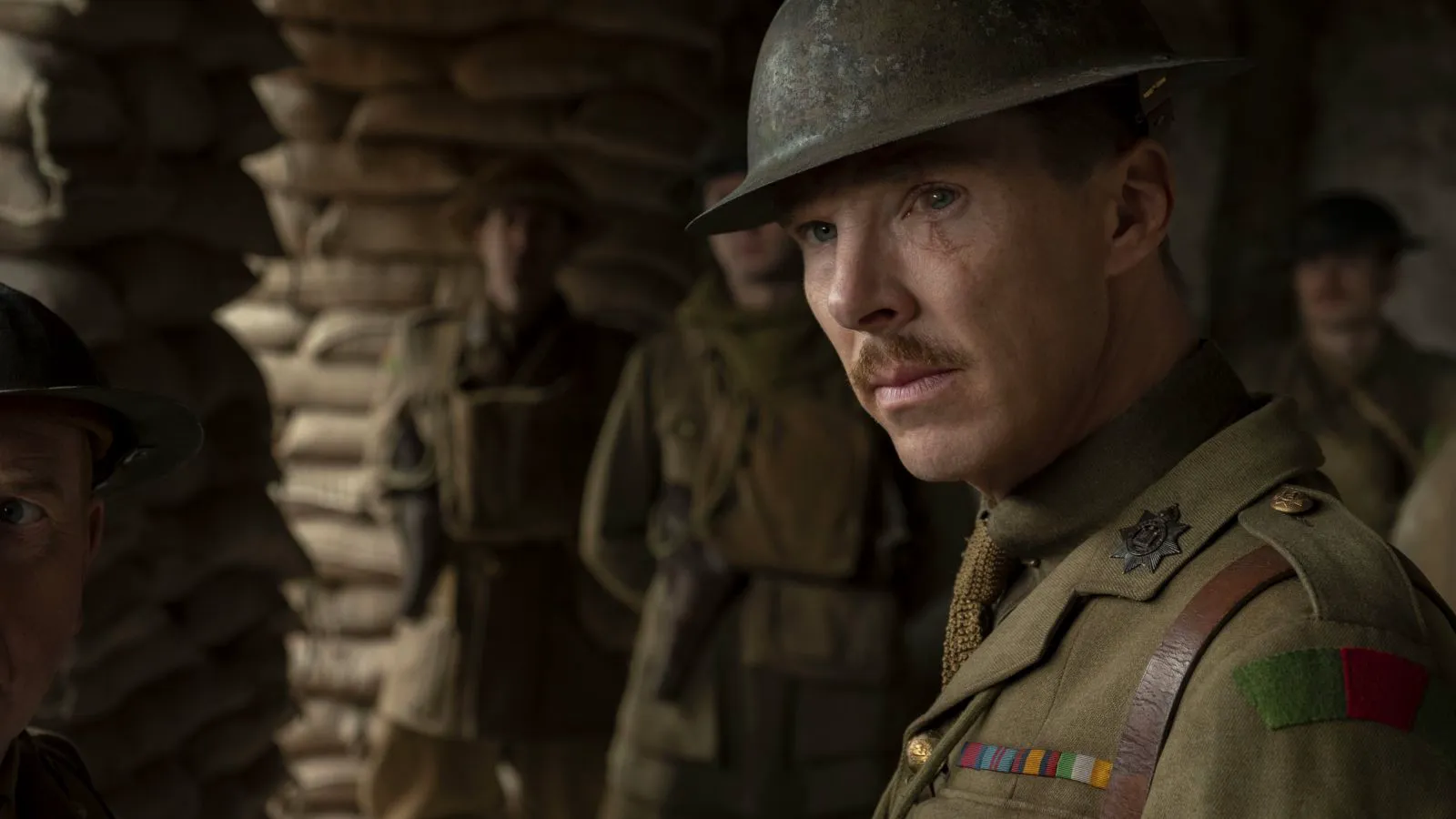
Mendes Stepping Outside His Comfort Zone
This overt formalism is a departure for Mendes, making his assuredness within this structure all the more remarkable. Mendes isn’t typically considered a visionary director. Despite stylistic flourishes in “Road to Perdition” or the bombastic flair of “Skyfall,” he often focuses on the mundane, telling stories of people struggling to escape the monotony of suburban life (“American Beauty,” “Revolutionary Road”) or military bases (“Jarhead”).
The lives of Schofield and Blake are anything but dull. They are surrounded by explosions, buried in the decaying corpses of enemies and comrades. They have no time for introspection or existential angst. Their journey is entirely external, physical. This is also unusual for Mendes, a director known for his focus on strong characters and complex emotions.
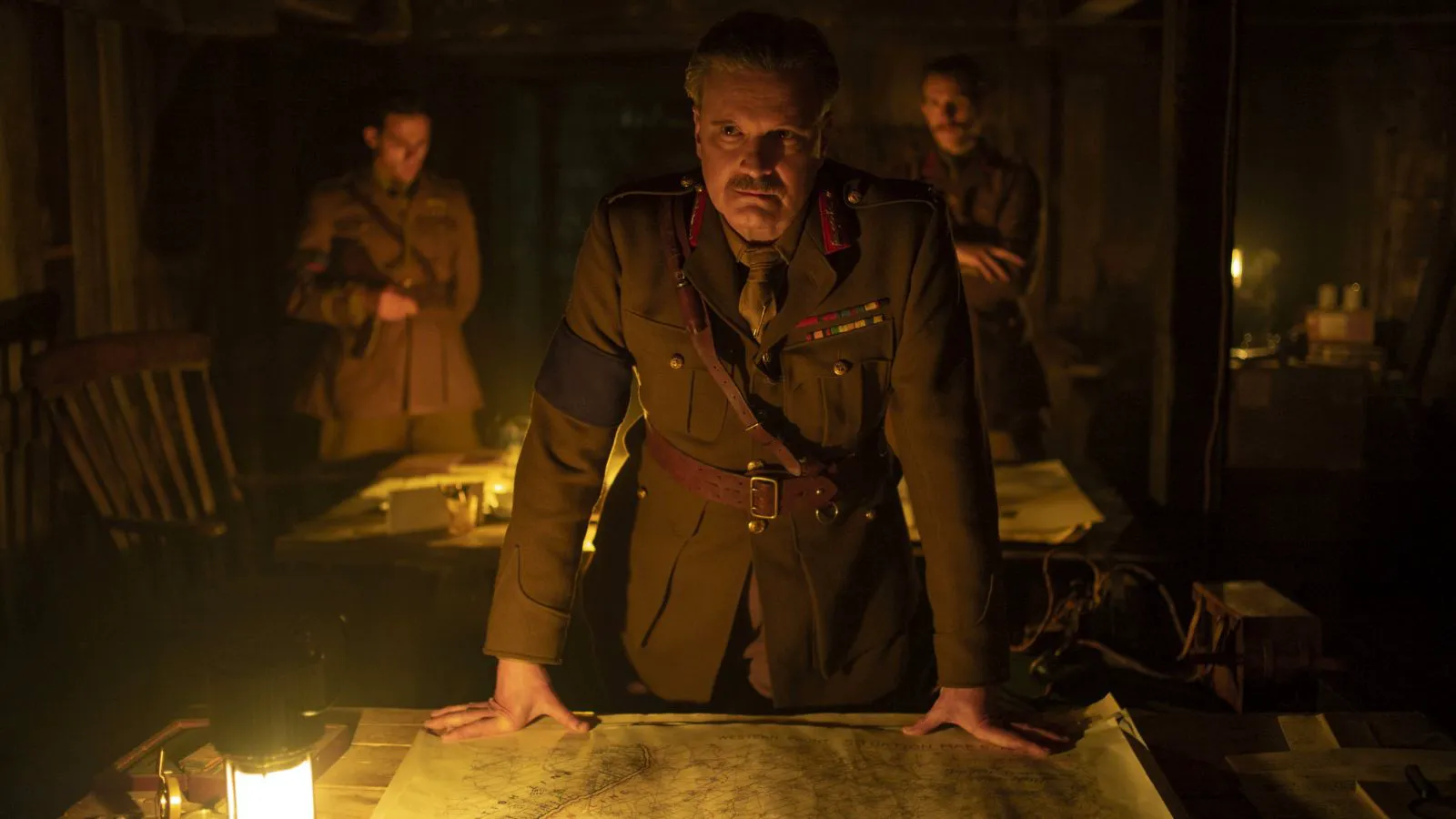
Stripped-Down Humanity
“1917” deliberately avoids complex character development. The protagonists are reduced to basic instincts, reacting to external stimuli like mud, soot, filth, and massive trench rats. It’s a war-torn version of “The Revenant,” similarly focused on the aesthetics of festering wounds and grime-covered faces. Instead of sleeping inside a horse carcass, we see a hand with an open wound accidentally plunged into a dead soldier.
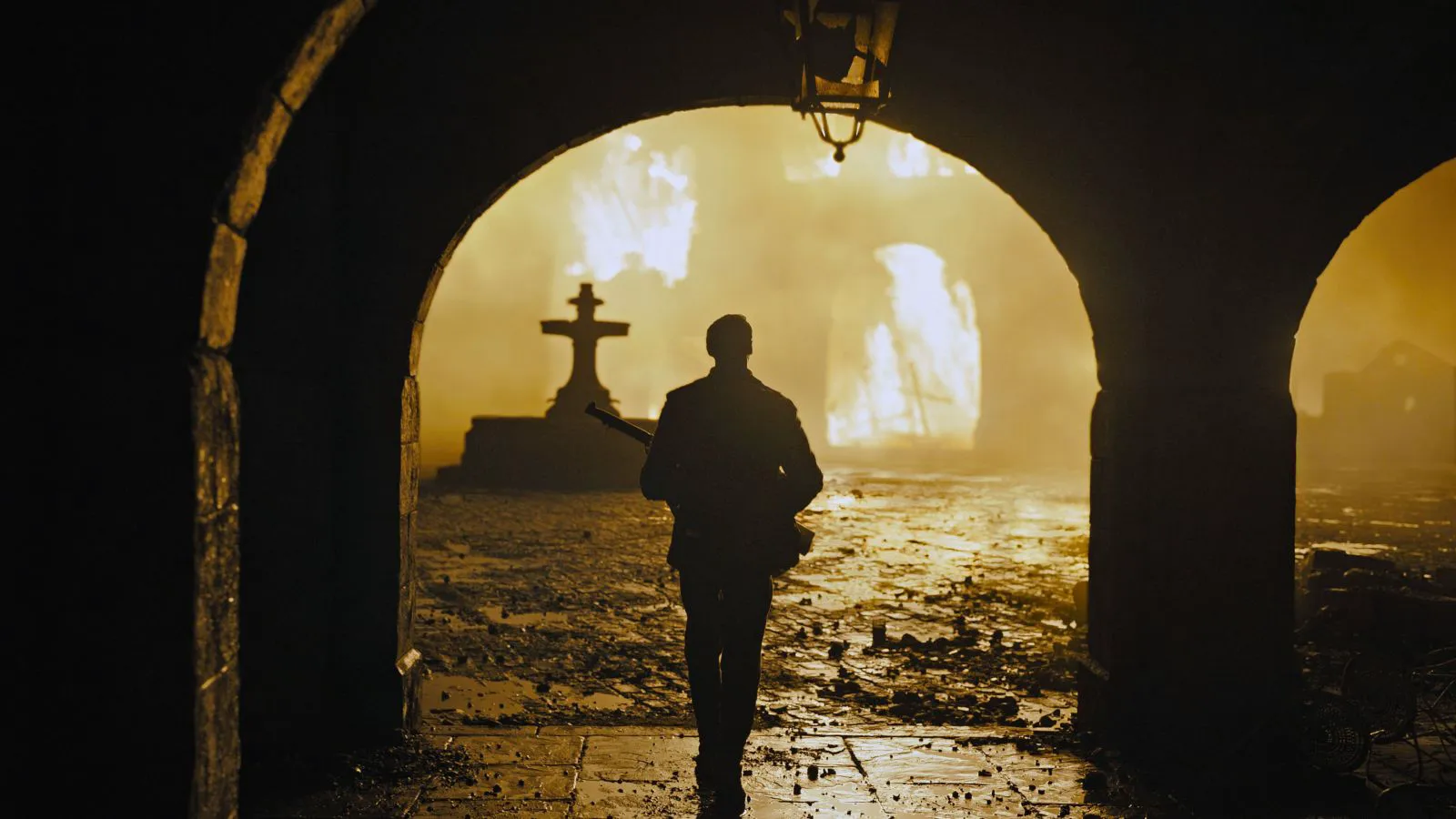
Poetic Moments Amidst the Carnage
However, some of Mendes’s signature style remains. As in many of his films, he incorporates striking poetic imagery, like the plastic bag in “American Beauty” or the oil-covered horse in “Jarhead.” “1917” features even more moments of sudden cinematic lyricism, as if to compensate for the film’s intensely physical nature: petals falling on corpses, burning cities, and melancholic songs under the trees. These are fleeting bursts of metaphysics amidst pure biophysics.
It’s understandable why some might find this approach irritating—it can be seen as banal, simple, or pretentious. But within the context of this specific film and Mendes’s directorial goals, it’s a precise choice. There’s no other way to connect the external and internal in a film with such a remarkable form. Some may be bothered by the very idea of a constructed film as a soulless work. But the mechanical nature of “1917” is clearly intentional, and within that chosen form, the film is nearly flawless.